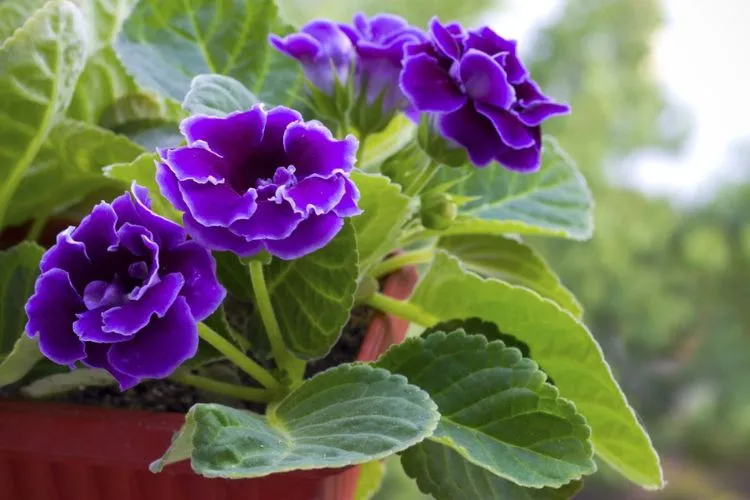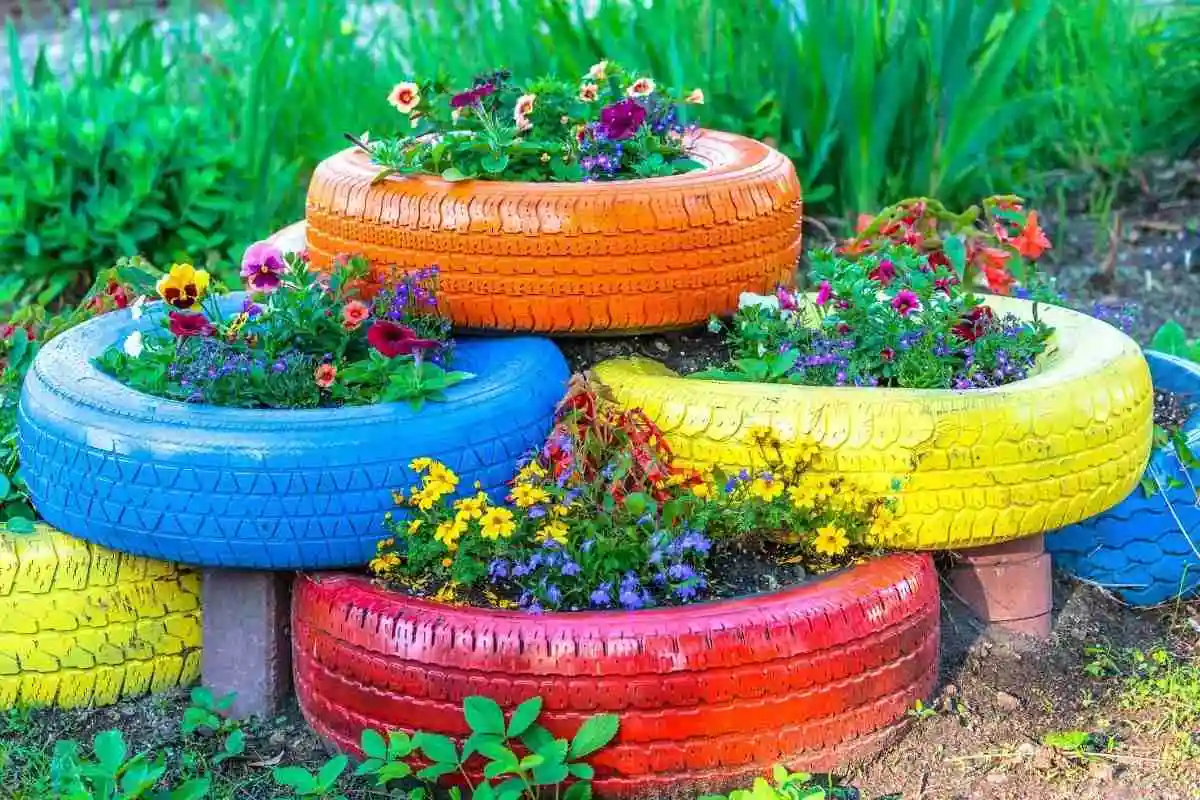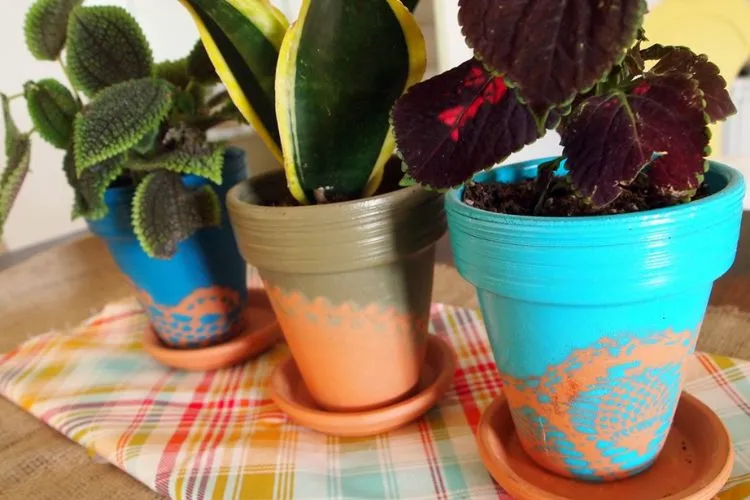As gardening enthusiasts explore creative ways to beautify their plants and pots, a common question emerges: Does acrylic paint harm plants?
This article takes an in-depth look at the relationship between acrylic paint and plant health. We aim to separate fact from fiction while providing useful guidelines for gardeners.

Understanding Acrylic Paint
Acrylic paint is a widely used artistic medium known for its versatility and quick-drying properties. It is primarily made of pigment suspended in an acrylic polymer emulsion, with water as the vehicle.
Though many acrylic paints are labeled non-toxic, this mainly refers to human exposure. The term non-toxic is not entirely indicative of its safety for plants; certain chemicals within may still be harmful to flora.
Does Acrylic Paint Harm Plants?
Applying acrylic paint directly to a plant’s leaves or stems can be detrimental. Plants rely on their leaves for photosynthesis, and paint can block light absorption and gas exchange.
Coated stems might struggle to transport nutrients and water. Even when non-toxic variants are used, this interference with natural processes can stress and even kill plants.
Paintings on pots present another concern. Pots, especially porous types like terracotta, allow for air and water flow. Applying paint might alter this balance, trapping excess moisture and fostering mold growth or, conversely, preventing the soil from retaining moisture.
Environmental Considerations
Beyond the immediate impact on an individual plant, environmental implications come into play. When acrylic paint breaks down, it releases microplastics into the soil.
These tiny particles can disrupt soil health and microorganisms, integral components of your garden’s ecosystem. Moreover, microplastics contribute to the larger global issue of plastic pollution, harming wildlife and infiltrating food chains.
Gardening With Painted Containers
Using painted containers does not have to be a death sentence for your plants if done carefully. To ensure the safety of your plants, it’s advisable not to paint the inside of the pots. Doing so helps avoid direct contact between the paint and the soil.

For terracotta pots, which are valued for their ability to wick away moisture, aim to leave at least a portion of the exterior unpainted to maintain their natural properties.
Best Practices for Using Acrylic Paint in Gardening
When it comes to using acrylic paint on outdoor fixtures and non-living elements of your garden, it’s a matter of choosing the right products and techniques.
Opt for paints labeled as eco-friendly or garden-safe, and ensure any runoff or excess does not find its way into the soil or water systems. Be mindful of where you clean your brushes and dispose of paint water to prevent soil and water contamination.
Pro Tip Sidebar
Ensure vibrant hues don’t cost the health of your plants by:
- Choosing paints and primers designed to be safe around flora.
- Seeking natural, plant-friendly alternatives to traditional acrylic paint.
- Staying updated on best practices for plant care and maintenance in relation to painting projects.
Safety Precautions When Painting Pots
When painting pots, gardeners should take several precautions to ensure both plant safety and personal health:

- Use Non-Toxic Paints: Select paints labeled as non-toxic to minimize harmful emissions and residue that could affect plant health.
- Ventilation: Paint in well-ventilated areas to avoid inhaling fumes, which can be harmful to both humans and plants.
- Protect Surfaces: Use newspapers or drop cloths to protect surrounding surfaces and soil from paint spills and splatters.
- Wear Protective Gear: Don protective gear such as gloves, masks, and eyewear to avoid direct contact with paint and fumes.
- Avoid Painting Interior of Pots: Keep paint on the exterior to prevent direct contact with soil and roots, thereby reducing the risk of chemical absorption by plants.
- Proper Drying: Allow painted pots to fully dry in a ventilated area before planting to ensure no harmful vapors are emitted once the plant is potted.
Implementing these strategies ensures a safe environment for both the plants and the gardener, while still achieving aesthetically pleasing results.
You may also find useful: Is Acrylic Paint Lead Free? | Does Acrylic Paint Burn?
Case Studies on Painted Plants and Pots
While specific case studies are not cited, anecdotal evidence and garden experiments reflect mixed outcomes from using painted plants and pots. On the positive side, creative expressions through painted pots have enhanced garden aesthetics and owner satisfaction.
Negatively, some gardeners experienced stunted plant growth and health issues, attributing them to restricted air and moisture exchange, especially with terracotta pots coated in impermeable paints.
These scenarios underline the importance of using correct materials and techniques in garden art projects.
Frequently Asked Questions (FAQs)
How long does acrylic paint last outdoors and how does this affect plants?
Acrylic paint is durable outdoors, lasting well against weather conditions without damage from water when drained or parched. This paint type minimally impacts plant health and growth, making it relatively safe compared to other paint types when used in proximity to plants.
Can you use waterproof acrylic paint for outdoor plant pots?
Yes, acrylic paint can be used outdoors, including on plant pots, due to its water-resistant properties. Although not completely waterproof, acrylic paint withstands exposure to significant amounts of water, making it suitable for outdoor applications. Items painted with it outdoors may eventually require a fresh coat to maintain their appearance.
Is latex paint safer or more harmful to plants compared to acrylic paint?
Comparing the effects on plants, both latex and acrylic paints have certain risks due to additives and chemicals. However, the specific impact on plant growth and health depends on the paint type used. Acrylic paint has a mentioned minimal negative effect on plants, suggesting it may be comparably safer or equally safe relative to latex paint. The primary concern with any paint concerning plant safety is its potential to obstruct natural processes such as sunlight absorption if applied directly to plants.
Conclusion:
The colorful flair of acrylic paint can indeed be included in gardening, but it requires careful application and attention to environmental impact. As with all aspects of gardening, balancing creativity with plant health and ecosystem preservation is key.
By minimizing the potential harm acrylic paint might inflict, gardeners can confidently and responsibly add a personal touch to their green spaces.

Meet Isabella Anderson, your acrylic painting mentor with over a decade of brush-wielding mastery. Dive into the colorful world of acrylics with her expert guidance, featured exclusively on ‘Acrylic Authority.’ Unleash your inner artist and explore the limitless possibilities of this versatile medium alongside a true acrylic aficionado.
